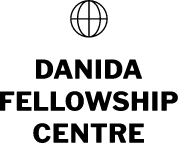The role of Female Community Health Volunteers
Description
Abstract
Maternal mortality and morbidity continue to be a considerable health problem in Nepal although numbers have declined in recent years. The Female Community Health Volunteer (FCHV) Program which was implemented in 1988 has provided basic health services and health promotion to pregnant women and mothers and serves as the link between the local community and the health care system. Nevertheless only 20% of births take place in the presence of skilled birth attendants and only 44% of women receive antenatal care (ANC). The role of FCHVs in improving maternal health and encouraging women to attend health services
regarding ANC and skilled delivery is unclear and it is of relevance to examine the relationship between FCHVs and pregnant women and mothers.
The objective is to explore the relationship between Female Community Health Volunteers and pregnant women and mothers in regard to women’s use of health services and examine how social and cultural factors play a role for the interaction between women and FCHVs in the context of maternal health in Nepal.
The methods used in this thesis include a qualitative study primarily constituted of interviews with Female Community Health Volunteers and pregnant women and mothers and additional interviews with program officers working with maternal health in Nepal conducted in a field work. Moreover, observations and a focus group discussion with a mothers’ group supplemented the interviews.
Findings from the field work were processed in a data analysis constituted of a combined method of Systemic text condensation and Situational analysis. Subsequently an analytical framework composited of the themes from the data analysis and selected theoretical concepts made the foundation for analysis. Theoretical concepts included Pierre Bourdieu’s notion of capital forms and fields, and additionally, a technology approach including configuration of users and social technology was applied to the empirical findings.The findings of this thesis show that the social position of the FCHV is acknowledged and appreciated in the community. About 2/3 of the women made use of FCHV services. The FCHV carries a high amount of symbolic capital compared to other stakeholders that can be
said to influence the relationship between FCHVs and women. Additionally, an examination of women’s position showed that women have a considerable awareness of attending ANC and skilled delivery and can be identified as being shaped into users of the technology of the FCHV Program.
In exploring the relationship between FCHVs and women from their different positions, the two groups could be identified as being positioned within the field of maternal health comprising benefits as well as disadvantages for maternal health behaviour. Additionally, the FCHV Program could be perceived as a social technology with implications for the relationship between the FCHVs and the women. Social and cultural factors connected to women’s relationship with especially husbands and mothers-in-law have been identified. Social and cultural structures in the context of maternal health in Nepal can be said to influence the relationship between women and FCHVs as well.
In conclusion, the FCHV Program can be identified as successful in promoting health for pregnant women and mothers, but it is important to strengthen the program in order to improve maternal health in Nepal further, by increasing FCHVs’ interaction with the population and by approaching the challenge of social and cultural factors influencing maternal health behaviour.

